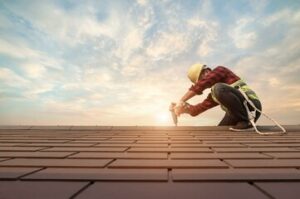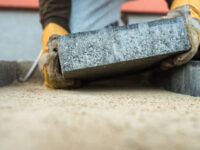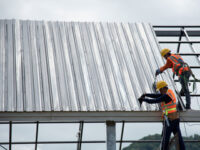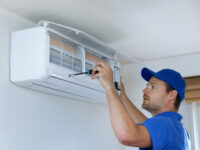How to Keep Your Roofing in Good Condition
A good roof is more than a protective covering, it’s also an efficient guardian against harsh weather conditions. A great roof should be durable, energy efficient, and provide proper ventilation to regulate temperature and moisture.
It should be visually appealing and compatible with the design aesthetic of the building. A great roof should also have fire resistance and be easy to inspect and repair. Contact Cedar Park Roofing Pro for professional help.
Fascia is an important part of the eave of a roof, and it protects your home from water damage. It should be kept in good condition to ensure the safety and longevity of your roof. Damaged fascia can allow moisture to seep into your house and cause rot, mold growth, and other problems. In some cases, the damaged fascia may need to be replaced.
If you have noticed signs of damage to your fascia, it is crucial that you schedule a professional to assess and repair the problem. Ignoring these issues will result in extensive damage to the soffit and roof of your home, as well as a decrease in its overall appearance.
A common sign of deterioration is the presence of cracks or splits in your fascia. These flaws can be caused by a variety of factors, including temperature fluctuations and UV rays. Eventually, these flaws can lead to moisture infiltration, which will further weaken the fascia and soffit.
Other signs of damaged fascia include mold or mildew growth, sagging or warping, and pest infestation. Mold and mildew are a clear indication of trapped moisture, while sagging or warping indicate structural damage to the soffit and fascia. Finally, pest infestations such as termites or carpenter ants are attracted to damp wood and can burrow into your fascia boards, causing further rot and damage.
There are a few ways to prevent and repair fascia damage. First, you should regularly clean your gutters to ensure that they are not clogged with debris, which can overflow and soak into the fascia. It is also important to maintain proper ventilation in the attic to prevent excess heat and moisture from building up.
If you notice any damage to your fascia, it is essential that you contact a professional for repairs as soon as possible. Ignoring this problem can cause severe damage to your soffit and roof, as well as reduce the lifespan of your roofing system. A professional will have the knowledge, skills, and tools to fix the problem quickly and effectively. They will also have access to any necessary roofing materials and can ensure that the work is done in accordance with local code requirements.
Leaking Shingles
If you are a homeowner, you might notice some shingles on your roof that seem to be lifting up or coming loose. This is typically caused by age and wear. Over time, shingles can deteriorate, especially when they are exposed to extreme heat or moisture. Additionally, strong wind and debris from severe storms can cause damage to your roof, causing shingles to loosen or even break off. These factors can lead to leaking, which is usually a clear sign that it’s time for a roof replacement.
Leaks are more common in areas where shingles overlap or near architectural features like chimneys and dormers. However, leaks can happen at other points as well. The good news is, that most leaks are easily repaired.
The first step is to locate the leak. This can be difficult, but it is important to find the source of the leak as quickly as possible. The best way to do this is to start in the attic, if you have access to it. If you cannot access the attic, you can use a flashlight to search for signs of water stains on the ceiling or walls inside your home.
Once you have found the leak, you can make a quick repair by installing flashing that is slightly bigger than the hole in your roof. This will help to keep rainwater and other debris out of your home.
It’s also important to inspect your roof regularly, including the gutters. They need to be free of leaves, branches and other debris, or they will clog and overflow, which can cause your shingles to loosen and leak. Additionally, you should clean out your gutters after every severe storm to prevent clogging.
While it may be tempting to climb a ladder and look at your roof up close, it is always safer to perform a visual assessment from the ground or from an upper-story window with a pair of binoculars. This will allow you to spot curled or cracked shingles, as well as damaged caulking and flashing. A professional roofer can also help with a thorough inspection of your roofing system.
Algae or Moss
Moss and algae are not only unsightly, they can damage the integrity of your roof. They also allow moisture to collect under the shingles, which can lead to rotting and other problems. Algae discolorations usually begin as green to black streaks on your roof and are actually caused by airborne spores that settle onto the surface of your roof, often in the northern exposure area where the shingle is most likely to be exposed to less sunlight.
Although algae is not as destructive to shingles as moss, it can still cause serious roof damage. The spores are spread by wind, birds or vermin and can collect in damp areas of the roof. Once a colony forms, it can spread rapidly, eventually covering large areas of the roof and turning them dark brown or black.
Algae is not easy to remove, but it can be done by using a hose with a low-pressure setting. A chemical solution is applied to the roof, and once the algae dries, it can be brushed away. A second treatment may be required to remove stubborn stains.
In comparison, moss can be easier to remove from the roof. A specialized low-pressure washer sprays a mixture of water and biodegradable cleaning solutions that kill the moss. The process is gentle enough to not damage the shingles, and a rinsing procedure removes any remaining spores and inhibits regrowth.
Moss growth is commonly found on the north slope of your roof, where shade from trees and overhanging sections creates damp conditions. It can also form under overhanging branches and debris, which block the sun from reaching the roof and creating a favorable growing environment.
A professional can use a special brush to scrape the moss from your roof, which is safer than climbing on top of your roof to remove the unwanted growth. Regular roof inspections, cleaning and maintenance can also help prevent moss and other unwanted organisms from growing. This includes trimming overhanging branches, ensuring proper attic ventilation, cleaning gutters, and selecting roofing materials that resist algae and moss.






